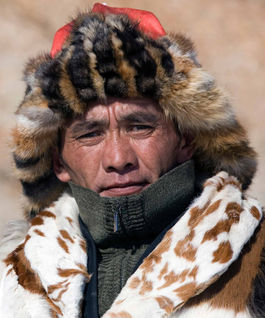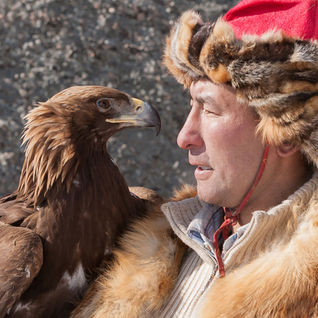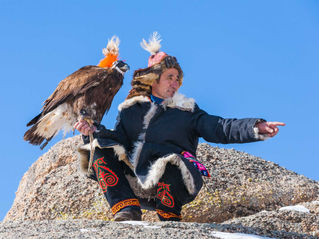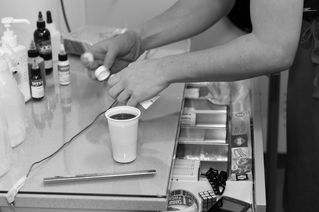Dubai Workers
Dubai, 43°C heat, but the construction of the many high rise buildings must go on. One floor per week is the standard in order to create pinnacles of hundreds of meters tall. Not even the sky is the limit.
It is not the architects nor investors that create these new wonders of the modern world. It is thanks to the thousands of cheap labourers from countries like India, Pakistan, Bangladesh or Sri
Lanka who are putting up with cruel working conditions to make the Arab dreams reality. After 12 hours shift in blistering heat, it is time to rush back to the labourer camps in the middle of the desert. To reduce the waiting time for the staff transportation or to secure a seat in an earlier shuttle bus, the workers run off the construction site with their last energy, but always with a smile in their faces.

Eagle Hunters
One of the oldest tradition in Mongolia unites Kasakh and Mongolian Eagle Hunters in the East of Ulaanbaatar to show their best eagles, their strongest horses and their new hunting skills. Eagle hunting is deeply rooted in this two nations' culture and still today practiced
to secure survival. The morning hours and temperatures around -35°C below freezing cannot take anything away from the fascination and grace of eagles, horses and hunters and their incredible collaboration.

The other side of Mongolia
Known as the “land of blue sky” Mongolia is the world’s least populated country and appeals through its untouched nature and endless vastness. In contrast, in the capital Ulaanbaatar air pollution and poverty prevails. At temperatures below -40 ̊C and engulfed in airless smog, not only the photographers work turns into a nightmare. These winter shots perfectly illustrate what common tourist photography never shows.
The country’s only power plants are coal-fired and located in the middle of the city. They also produce hot water for the city’s heating system, which is distributed through massive, ugly overground pipes to some privileged areas where traditional nomads have raised to live in wooden or concrete housing blocks. Nature’s paradise turns into hell and the quality of life drops deep down to the level of the icy temperatures.

Colors of Disaster
The copper and gold mines of Roșia Montană were nothing else than a curse for two villages in the gorgeous Apuseni mountains in Romania’s Western Transylvania. The tragedy started in 1977 under communist dictator Nicolae Ceausescu who decided to exploit the vast underground deposits of copper and gold. The entire population of Geamana communities were forced by the state to leave their villages and therefore their livelihood in order to give way to the toxic waste of the mines.
Approximately 400 families were moved, their villages replaced by a huge retention basin of a highly contaminated slag. Still today, this basin contains cyanid and other environmentally harmful chemicals whose diabolic mixture generates surreal colours. Soon the basin grew to a lake and swallowed not only the holy house of God but everything which once was part of people’s life.

Under my skin









































